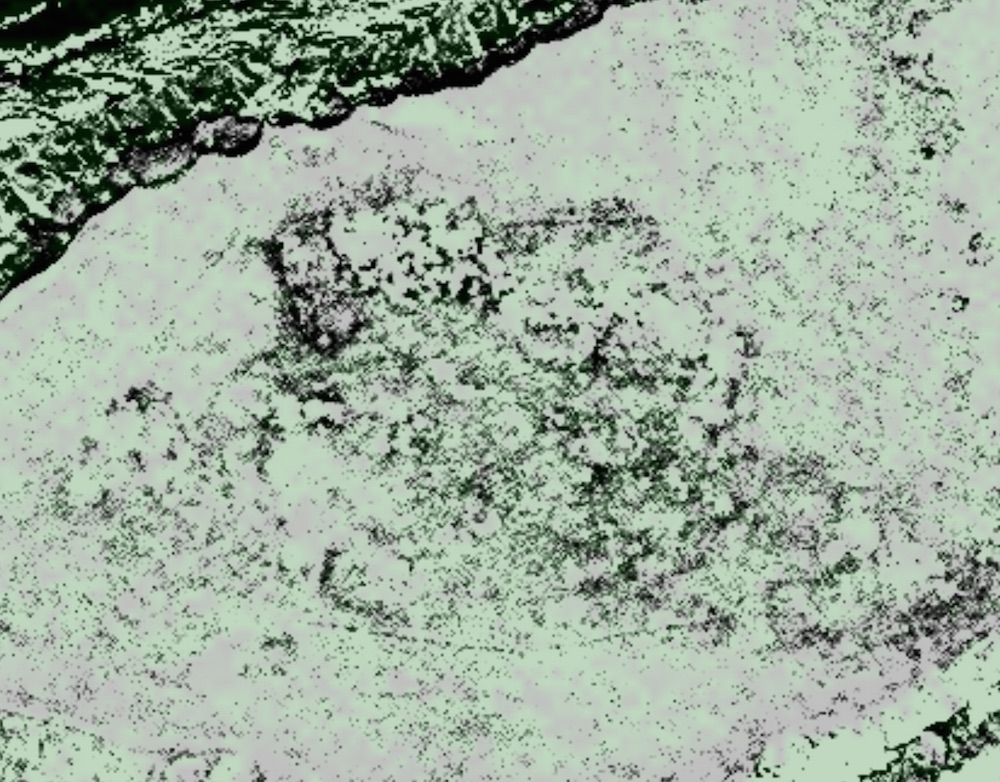Possible Viking Settlement in Canada Revealed in Satellite Images

Scientists have uncovered what may be a previously unknown Viking settlement in Newfoundland, Canada, news sources report.
The newly identified site, known as Point Rosee, contains a hearthstone that was likely used for working iron, making it only the second known pre-Columbian, iron-processing site in North America, the researchers told National Geographic.
The team is still examining the site, which was discovered with the help of detailed satellite images. The public can follow their progress by tuning into "Vikings Unearthed," a 2-hour NOVA special that can be watched online Monday (April 4) and on TV Wednesday (April 6). [Fierce Fighters: 7 Secrets of Viking Seamen]
The new finding isn't the first evidence that Vikings lived in North America. In the 1960s, scientists uncovered a Viking settlement, also in Newfoundland, that dated to about A.D. 1000. That settlement, called L'Anse aux Meadows, proved that Christopher Columbus wasn't the first European to set foot in the New World.
The L'Anse aux Meadows discovery also suggested that the events described in two famous texts called the Vinland sagas actually happened, said Birgitta Wallace, a Parks Canada archeologist emeritus, who helped excavate L'Anse aux Meadows, but isn't involved with work on the new site.
Those sagas tell the story of how a group of Vikings living in Greenland got lost at sea, and accidently discovered a new land, southwest of Greenland.
Now, the discovery of a second possible Viking settlement could lend more credence to the Vinland sagas, Wallace said.
Get the world’s most fascinating discoveries delivered straight to your inbox.
"The sagas suggest a short period of activity and a very brief and failed colonization attempt," Douglas Bolender, an archaeologist specializing in Norse settlements who is working at the new site, told National Geographic. "L'Anse aux Meadows fits well with that story, but is only one site. Point Rosee could reinforce that story or completely change it if the dating is different from L'Anse aux Meadows. We could end up with a much longer period of Norse activity in the New World."
So far, radiocarbon dates from the Point Rosee site suggest that people lived there sometime between A.D. 800 to 1300, the researchers said.
Researchers uncovered the new site using satellite technology. The space-based reconnaissance allowed scientists to look at large swaths of landscape and find archaeological disturbances within the land, some as small as 11 inches (28 centimeters) long.
The team's leader, Sarah Parcak, an associate professor of anthropology at the University of Alabama at Birmingham and a National Geographic Fellow, won a $1 million award from TED in 2016. She used the prize money to fund, in part, the investigation into Point Rosee after the satellite imagery had revealed an anomaly at the site.
During the excavation, the team found the iron-working hearth amid the remains of what is possibly a man-made turf wall, National Geographic reported. The scientists spent 2.5 weeks at the site, and found what may be evidence that the people there roasted a type of material called of bog iron. (Iron deposits can form naturally in some bogs, and the Norse would find it and smelt it.) [In Photos: New Viking Voyage Discovered]
There is no evidence that indigenous people in North America processed iron, except for some Inuit use of meteoric iron and turf structures in the Arctic, the researchers said. Only one known culture from that period processed bog-iron ore and built turf walls in North America: the Vikings, they said.
But more research is still needed to determine whether Point Rosee is, in fact, a Viking establishment.
"It would be very exciting if this really were a Norse site," Wallace told Live Science. "[But] I think that there is not sufficient evidence to very definitely nail it down as Norse. We need a little more."
For instance, the turf walls at Point Rosee don't look like turf walls from other Norse archaeological sites, she said. Moreover, the Vikings are thought to only have landed in Greenland in about A.D. 985, Wallace said. The settlement there was small — about 400 to 500 people — and any new colonies in Newfoundland would have required a substantial number of people to sustain.
There were likely about 70 Vikings living at the L'Anse aux Meadows site, and it would have been hard for Greenland to spare even more people for the Point Rosee camp, Wallace said.
Further excavations this summer will likely reveal whether Point Rosee has more clues linking it to the Vikings, she said.
The special, which also delves into Norse history and culture, and is co-produced with the BBC, will show on pbs.org/nova at 3:30 p.m. EDT/2:30 p.m. CDT Monday (April 4) and on PBS at 9 p.m. EDT/8 p.m. CDT Wednesday (April 6).
Follow Laura Geggel on Twitter @LauraGeggel. Follow Live Science @livescience, Facebook & Google+. Original article on Live Science.

Laura is the managing editor at Live Science. She also runs the archaeology section and the Life's Little Mysteries series. Her work has appeared in The New York Times, Scholastic, Popular Science and Spectrum, a site on autism research. She has won multiple awards from the Society of Professional Journalists and the Washington Newspaper Publishers Association for her reporting at a weekly newspaper near Seattle. Laura holds a bachelor's degree in English literature and psychology from Washington University in St. Louis and a master's degree in science writing from NYU.




